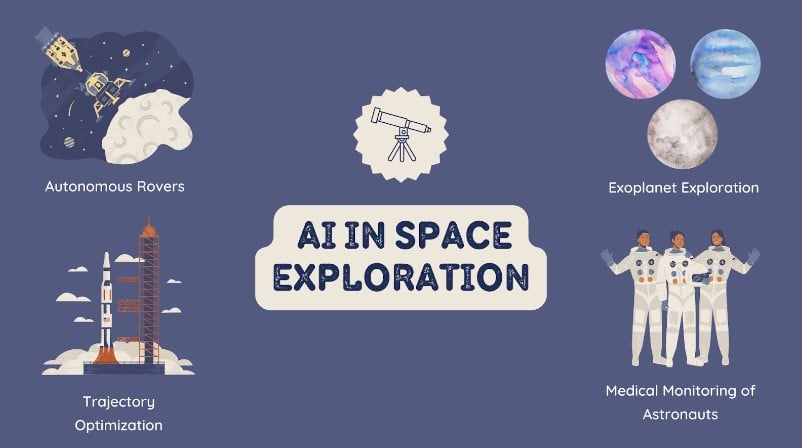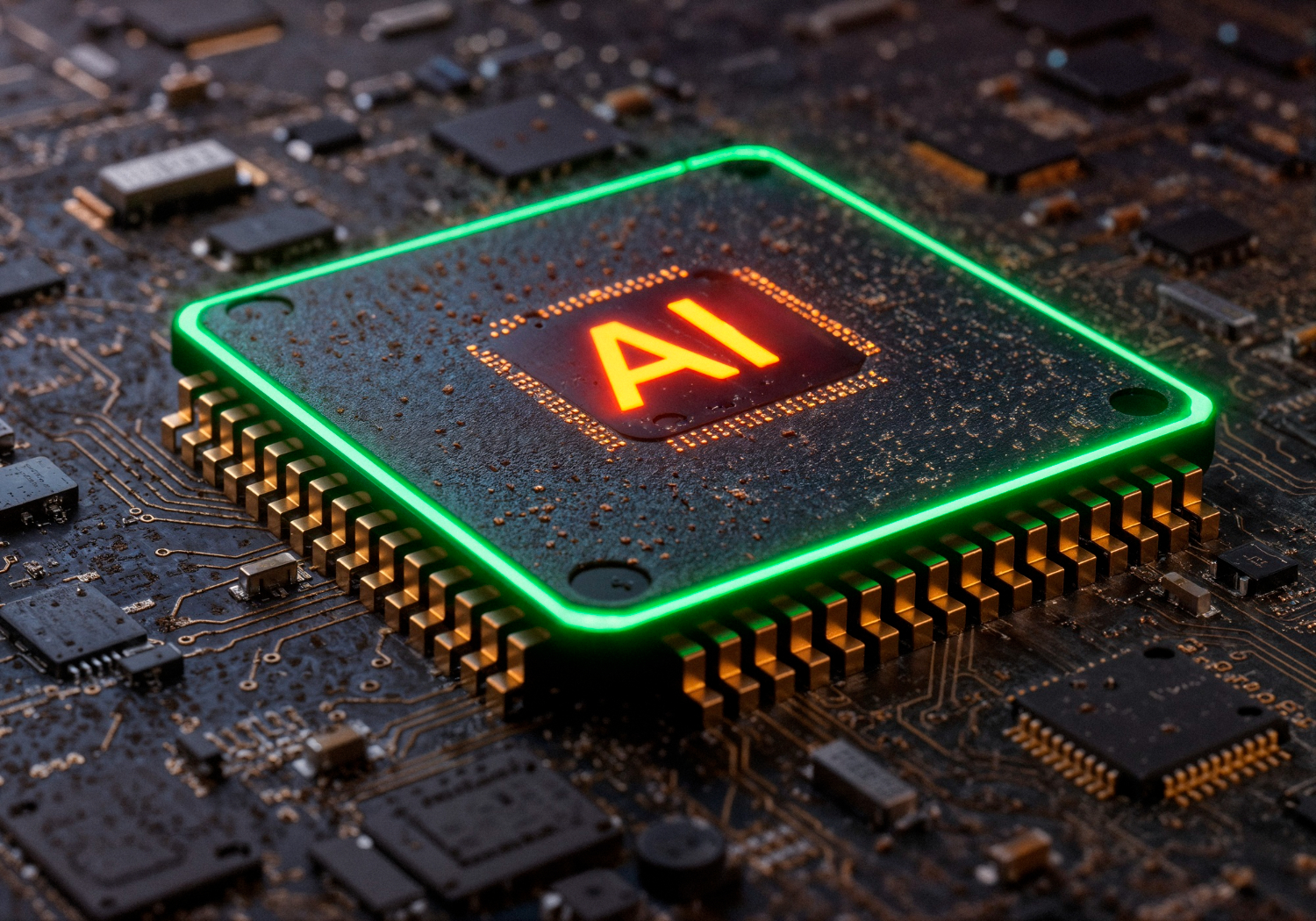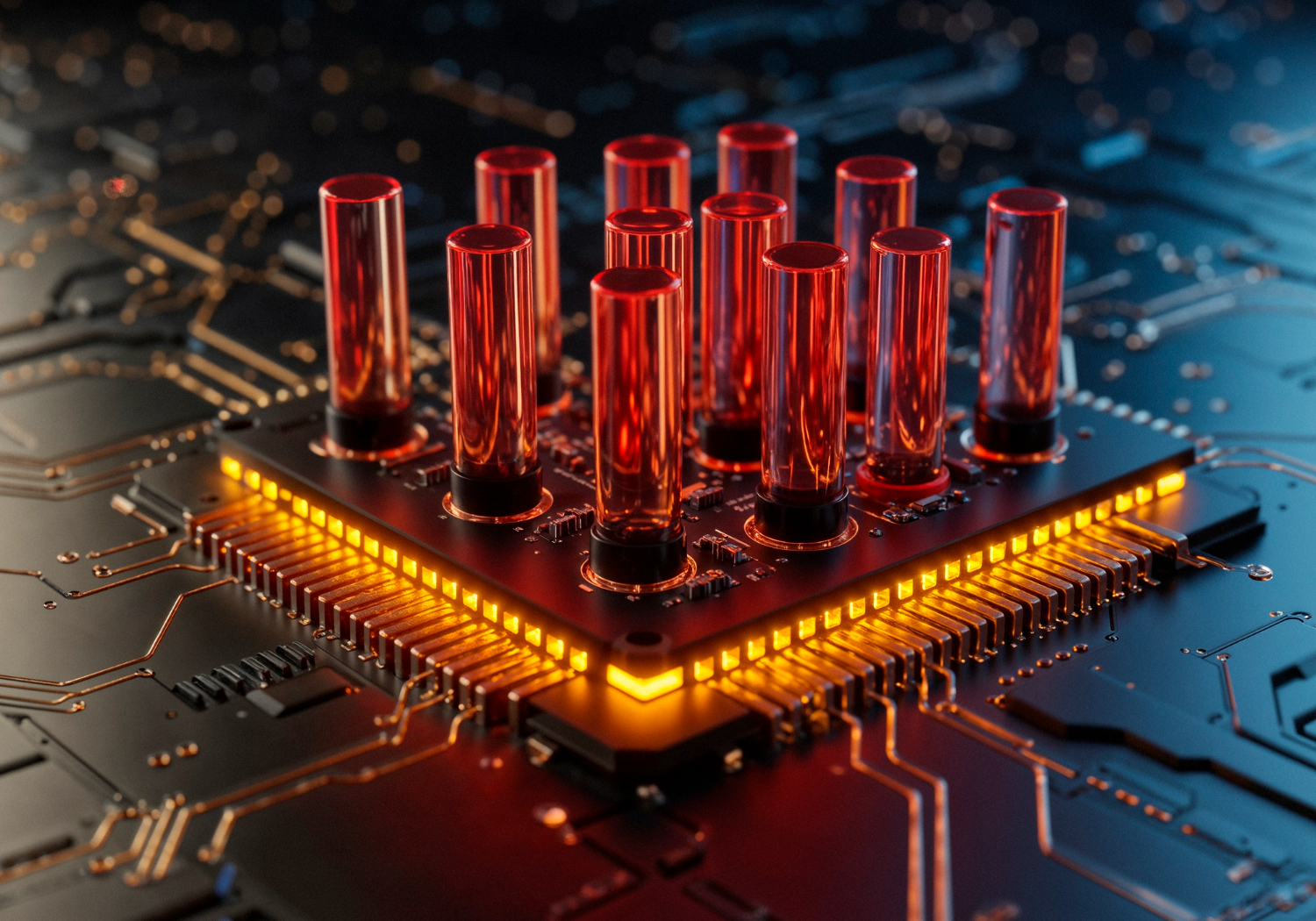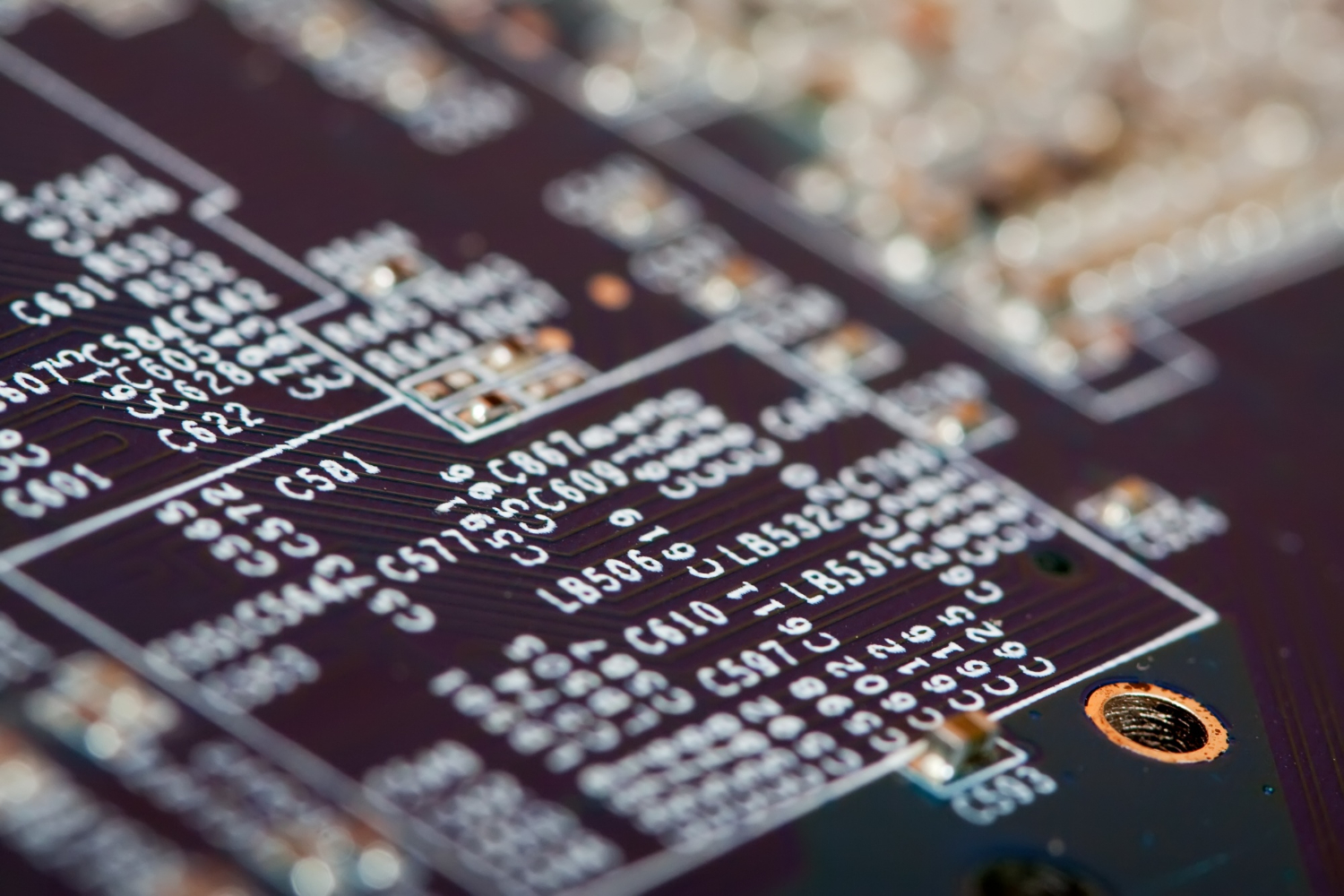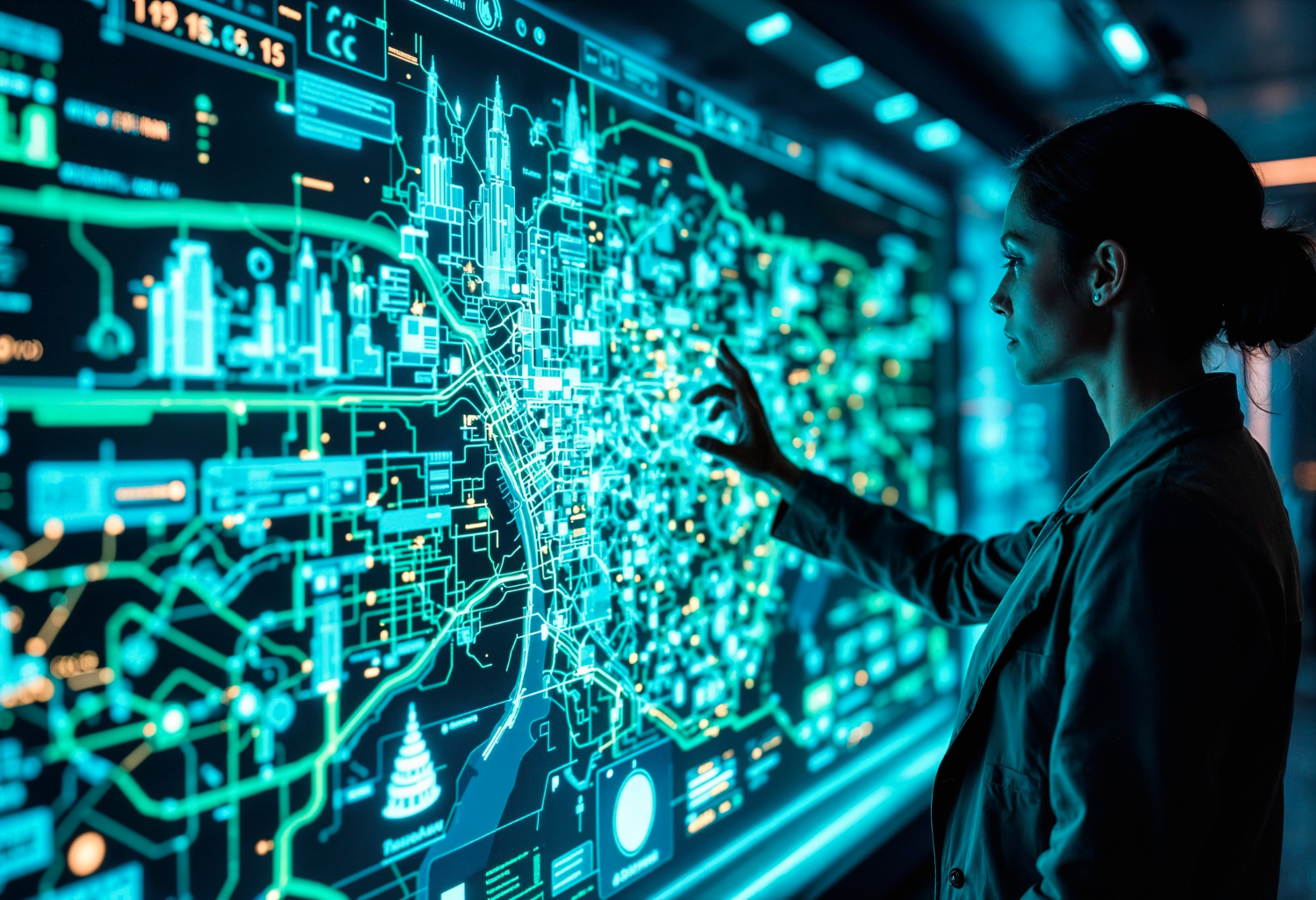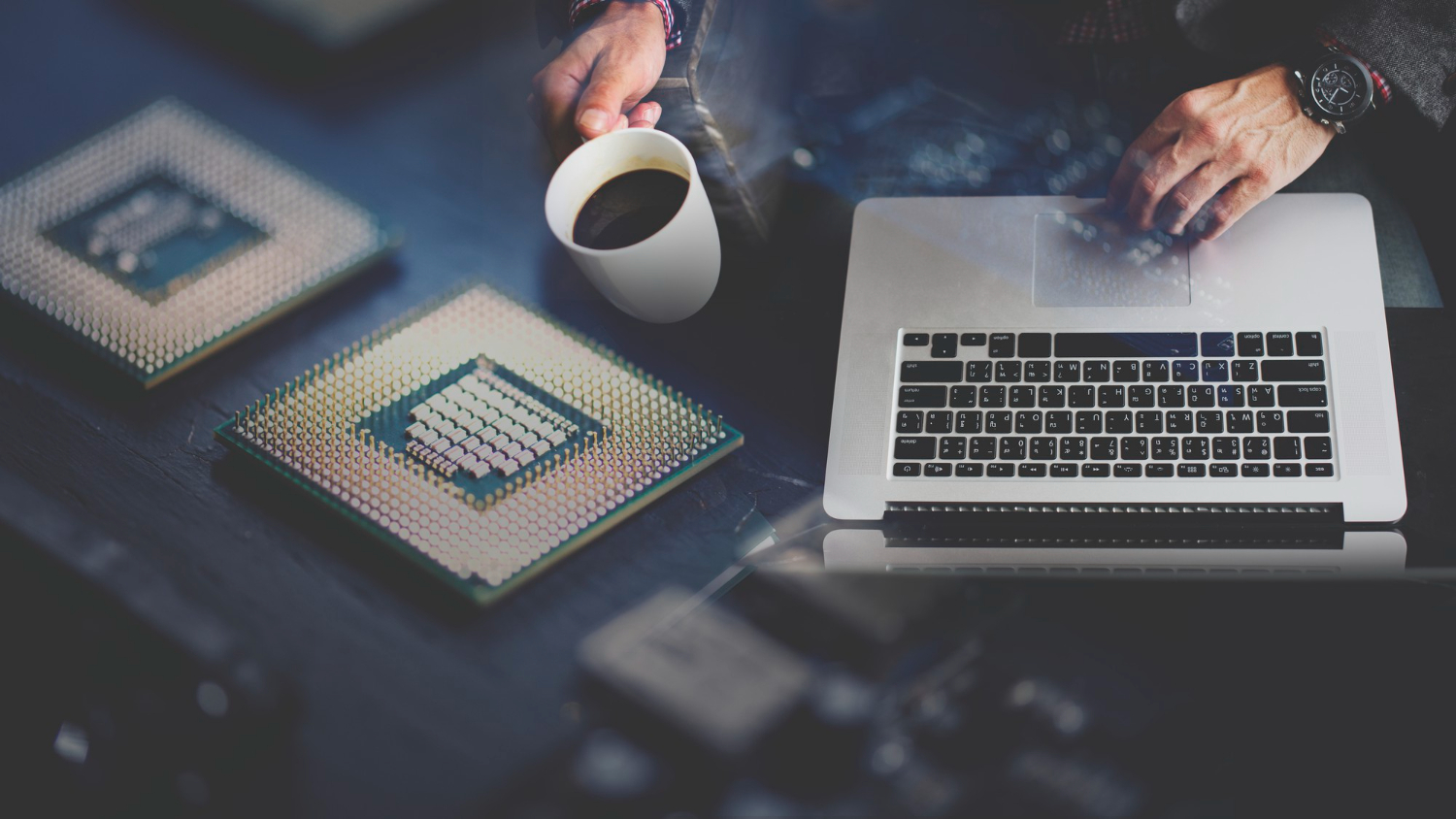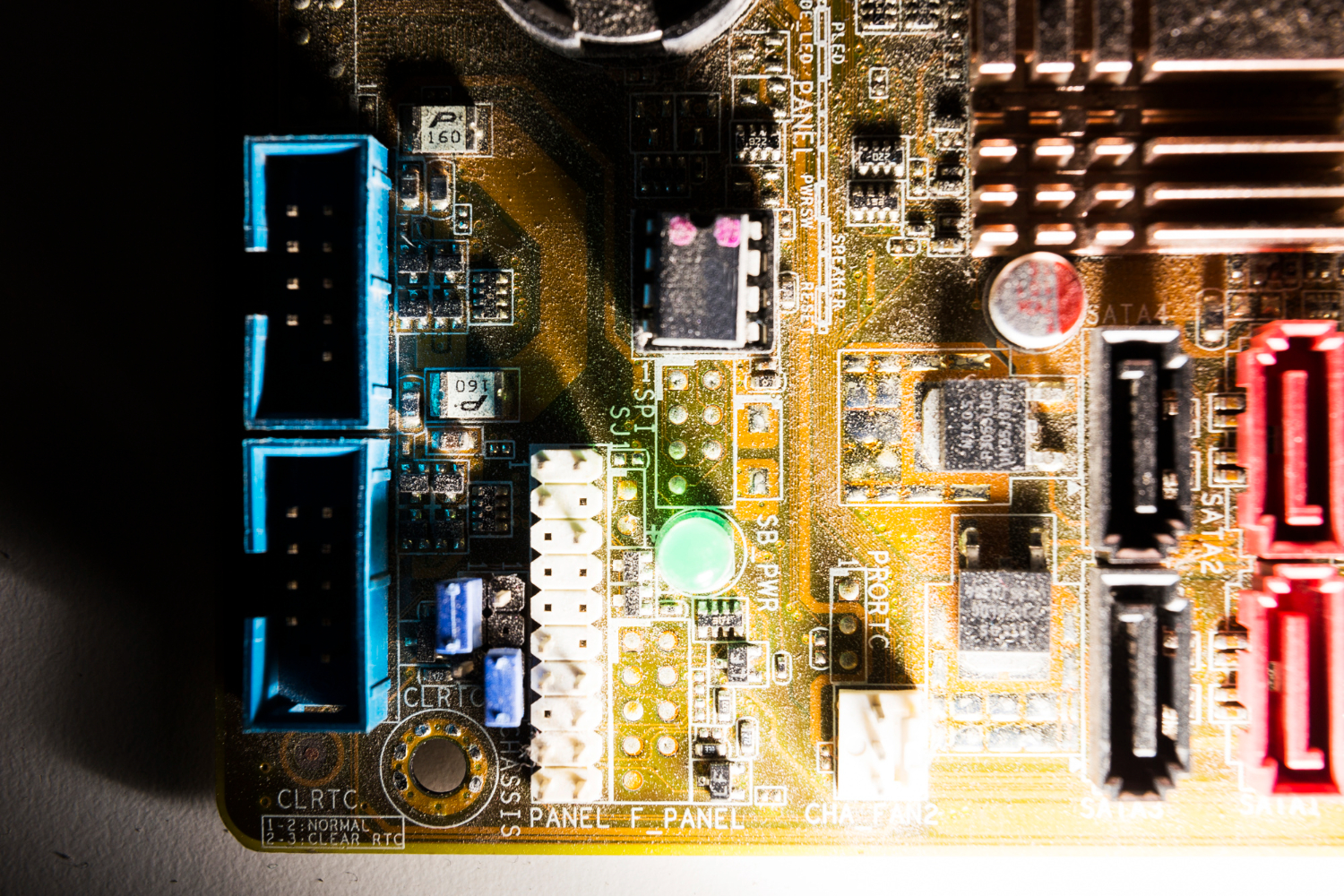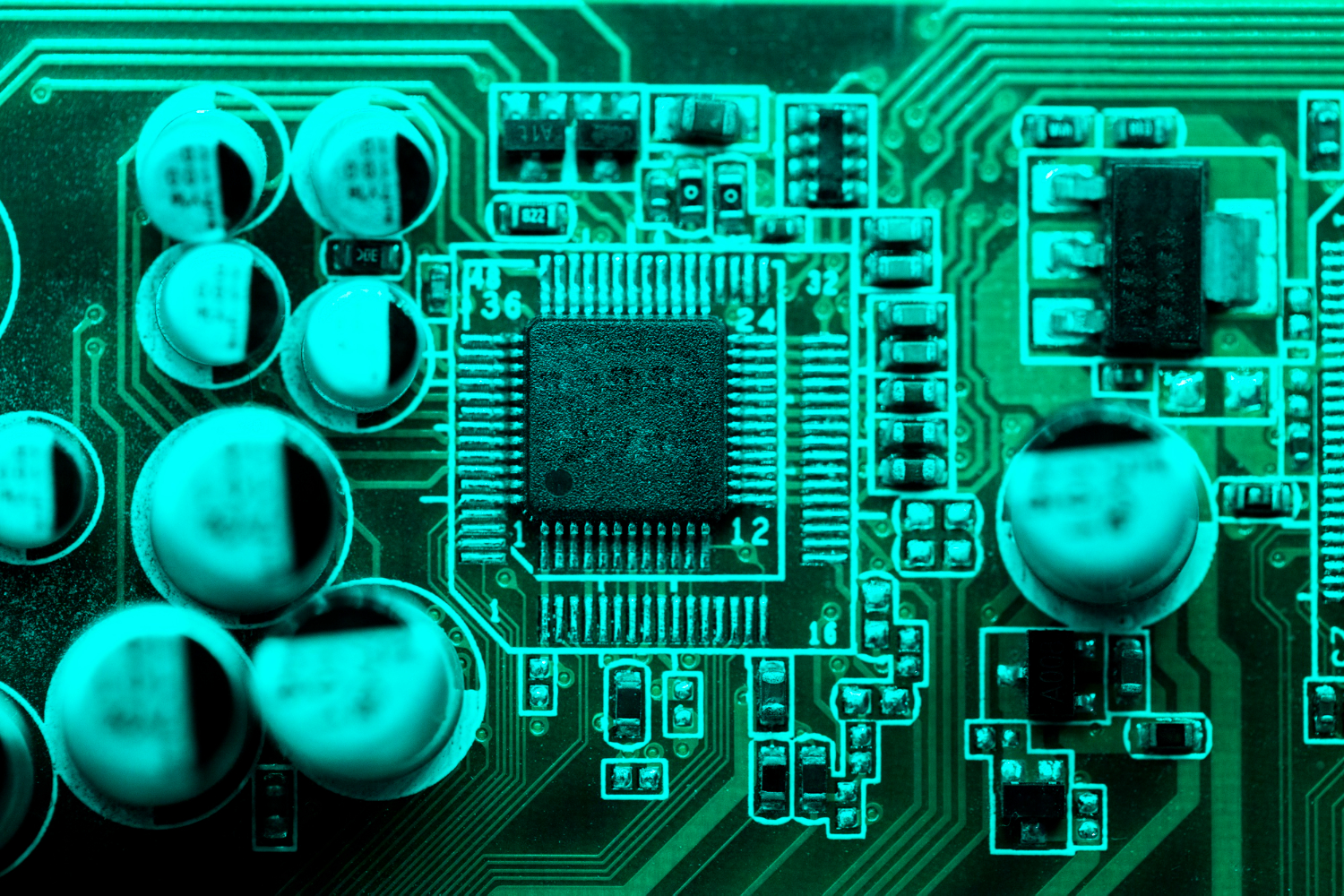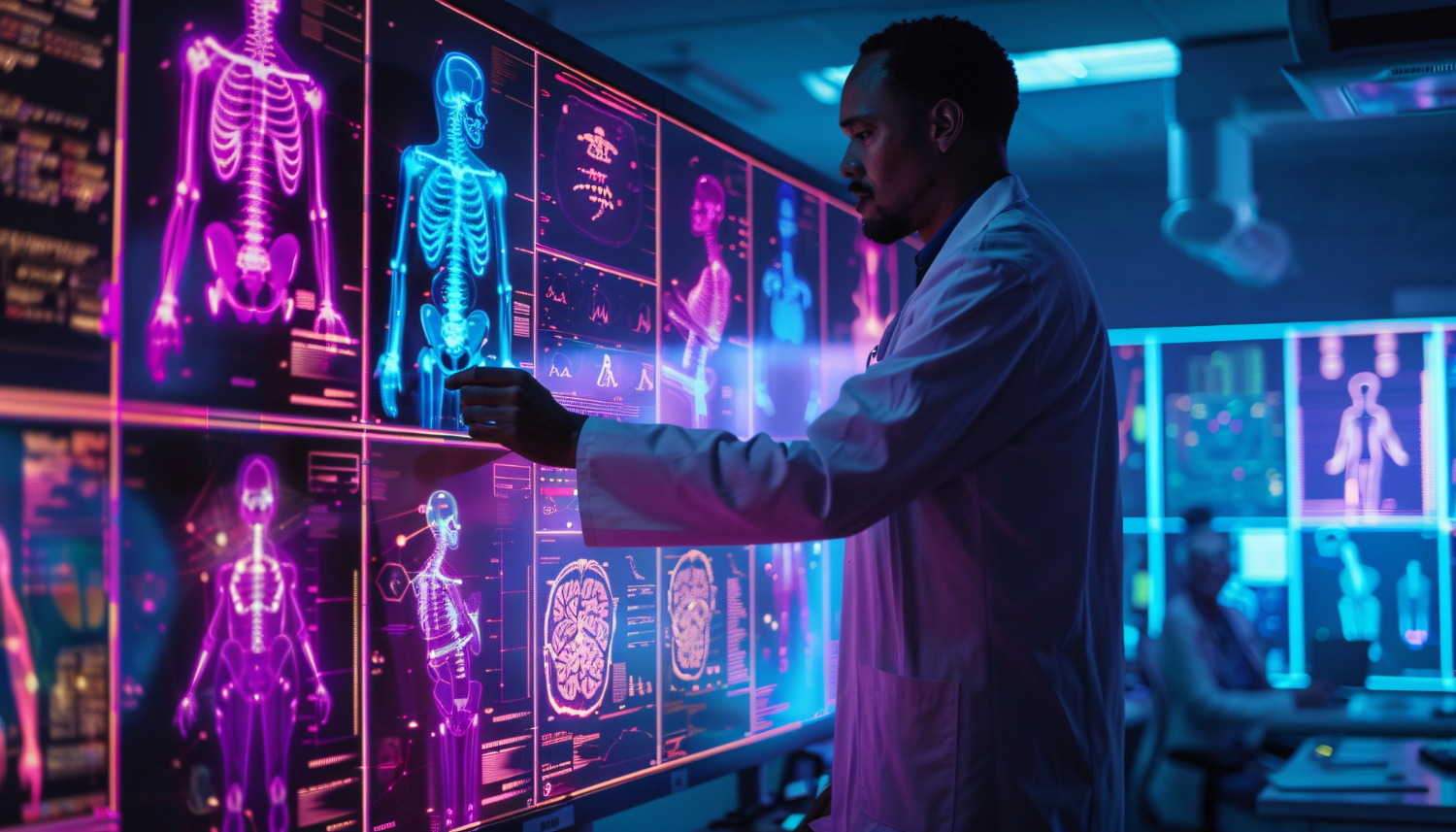Introduction
When we consider the entire universe, our planet, Earth, is just a little speck. And that’s what intrigues us to fuel our efforts toward space exploration. Humans have been curious about outer space since ancient times. But, the mid-20th century is when things really kicked off, and the first human-made object journeyed into space. Since then, we’ve come quite far. Space stations, astronauts spending months in outer space, anti-gravity chambers, rovers exploring Martian terrain, and the list of what has become possible goes on.
However, there are challenges when it comes to space exploration. There are extreme environments, vast distances, communication delays, and the need for autonomous decision-making in scenarios where humans can’t intervene. Also, huge amounts of space mission data need to be analysed.
This is where artificial intelligence or AI can step in. AI is currently being used in various aspects of space exploration. Here are some examples:
- Mission Planning and Decision Making: AI is redefining space mission planning with enhanced precision and smarter decision-making capabilities
- Space Debris Management: AI is tackling the growing challenge of space debris, and ensuring safer orbits for satellites and spacecraft.
- Autonomous Rovers: AI-driven rovers are being used to navigate extraterrestrial terrains autonomously.
- Exoplanet Exploration: AI’s advanced data analysis skills are essential for finding and researching exoplanets, broadening our understanding of the universe.
The impact of AI on space exploration is clearly shown in its market growth. Starting from 135.20 billion USD in 2022, the space exploration AI market is expected to grow at an annual rate of 35.6%. It’s projected to reach around 1798.76 billion USD by 2030. This makes it even more important to understand the AI-related technologies involved in the aerospace segment outside our planet!
In this article, we’ll explore how cutting-edge technologies like computer vision, generative AI, and others are playing a crucial role in space exploration. Let’s dive right in!
How Computer Vision is Transforming Space Missions
Computer vision is a subdomain of artificial intelligence that teaches computers to understand visual information from images and videos. It’s similar to how humans can make sense of what they see. This is handy for space missions because it means rovers can be installed with cameras to see and understand things without sending a human to space. Computer vision helps make autonomous rovers a reality.
In January 2004, The Mars Exploration Rover (MER) mission successfully landed two identical rovers, Spirit and Opportunity, on the Martian surface and this mission continued till 2018. The main goal of the mission was to explore Martian geology and search for signs of water in the past. This knowledge would help answer whether Mars could have supported life. The MER mission is a great example of how computer vision can be used for space exploration.
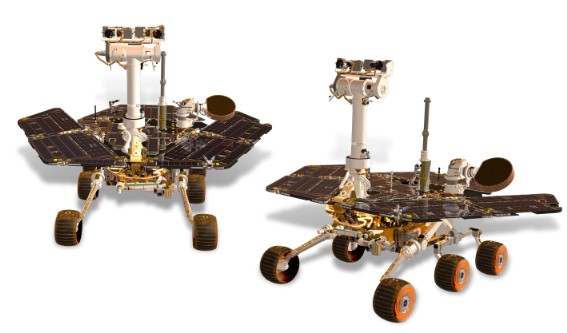
For navigating the Martian terrain and estimating the horizontal velocity of the landers before touchdown, the rovers used stereo vision, visual odometry, and feature tracking. They were outfitted with a downward-facing monocular descent camera and three stereo camera pairs. These cameras included hazard and navigation cameras that captured images in 1024 x 1024 grayscale resolution. The vibrant colours we can see in photos of this mission were added later on Earth.
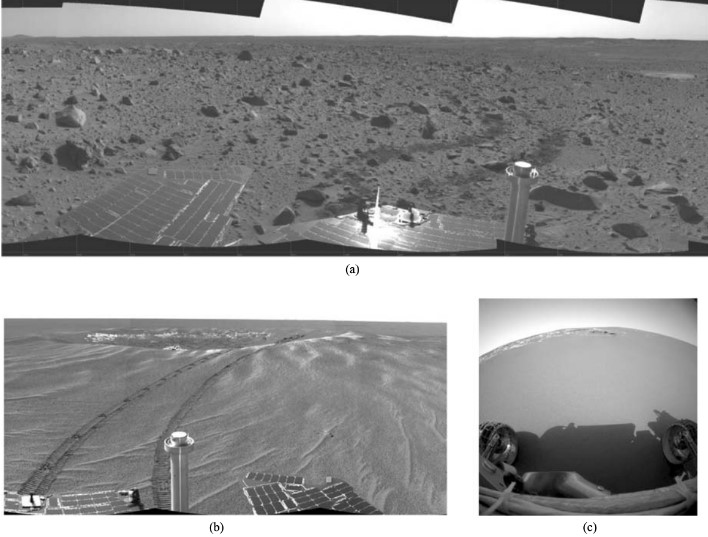
Computer vision was key in three ways for the Mars rovers. First, it helped with figuring out how the rovers moved when they landed. In other words, computer vision helped with descent motion estimation and ensured the rovers touched down safely. Then, once on Mars, computer vision helped them with obstacle detection for navigation. Any dangers like big rocks or holes were detected and accidents were avoided while the rovers moved around.
The Mars rovers also used visual odometry throughout the mission to calculate the distance the rover had travelled and its orientation based on the images captured. This information was vital for the mission control team on Earth to accurately determine the rovers’ locations and plan exploratory paths.
Thanks to computer vision, the MER mission was a success. It provided vital insights into the history of water on Mars and supported the possibility that the planet could have sustained microbial life. The rovers’ discoveries included evidence of past water activity in the form of minerals and geological formations. The MER mission really opened our eyes to what Mars is actually like. This achievement really brings to light AI’s impact on space explorations!
The Role of Generative AI in Space
Generative AI is another branch of artificial intelligence. It focuses on creating new content like images, text, or music. It works by learning from vast amounts of data and then using that knowledge to generate new, original pieces. This is similar to an artist who learns different styles and techniques and creates unique artwork. For space missions, generative AI could be used to simulate environments, predict outcomes, or even design components.
NASA is working on integrating generative AI into space exploration by developing a ChatGPT-like AI assistant. Their aim is to allow astronauts to communicate conversationally with spacecraft. This ChatGPT-like AI assistant may become part of the Artemis programme’s Lunar Gateway space station which is expected to launch in 2025.
Led by Dr. Larissa Suzuki, this generative AI project focuses on creating an AI-enabled interplanetary network. She said, “The idea is to get to a point where we have conversational interactions with space vehicles and they [are] also talking back to us on alerts, interesting findings they see in the solar system and beyond. It’s really not like science fiction anymore.”
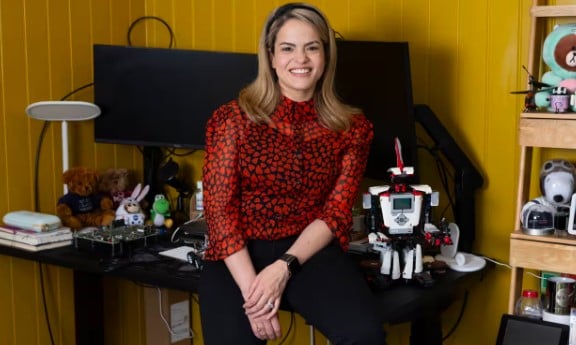
The AI-enabled interplanetary network will be able to identify and fix communication issues. Such innovations can simplify space experiments and manoeuvres for astronauts, making collaborative space exploration possible.
Here are some of the main features of the AI assistant NASA is developing for space communication:
- Conversational Interaction: Enabling astronauts to communicate conversationally with their spacecraft.
- Alerts and Discovery Updates: Providing information on interesting findings observed in space.
- Interplanetary Communication Network: An AI system designed to detect and potentially fix communication issues in space.
- Natural Language Interface: Simplifying communication, making it easier for astronauts to receive advice and conduct space experiments without relying on technical manuals.
So, how does this work? While we can only hypothesise about the specifics of NASA’s work with generative AI from a technical standpoint, they’re likely using large language models (LLMs) as a key component. LLMs, like the technology behind ChatGPT, are designed to be able to process and generate human-like text. These models could be tailored to interpret complex scientific data, provide decision-making assistance, and enable natural language interactions between astronauts and spacecraft systems.
One of the other things that Suzuki touched upon was the difficulty of deploying machine learning in space, and how it isn’t possible to process huge amounts of data there. This is where AI-related topics like the Internet of Things (IoT) and edge computing come into play.
IoT and Edge Computing: A New Frontier in Space Exploration
IoT and edge computing are innovative technologies that are changing how we gather and process data. IoT helps connect various devices or objects to the internet, allowing them to collect and exchange data for remote monitoring, control, and automation of systems. Edge computing then steps in to process this data locally, instead of sending it to distant servers. This approach is essential for space missions due to the long delays involved in transmitting data across vast distances. For instance, a temperature reading from the moon can take 5-20 minutes to reach Earth, and high-resolution images can take even longer. By processing data locally using edge computing, these delays can be significantly reduced, enabling faster decision-making and more efficient bandwidth use.
This combination of IoT and edge computing is incredibly useful for space missions, allowing spacecrafts to gather vast amounts of sensor data and process it on the spot. This means more efficient data handling and real-time decision-making.
KaleidEO Space Systems, a Bengaluru-based startup, is the first Indian company to showcase edge computing in space. This AI innovation enables real-time analysis of satellite imagery, using deep learning algorithms to process data directly on the satellite. With hardware and implementation support from Spiral Blue, KaleidEO successfully performed tasks like cloud detection, road network mapping, and change detection in images. A remarkable 80-fold improvement in processing efficiency was seen. Additionally, it achieves a significant 99% reduction in data volume. The company is now gearing up to launch four satellites equipped with edge computing by 2025.
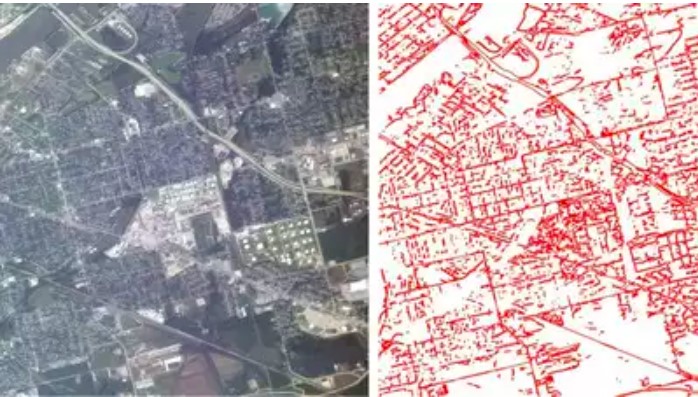
Incorporating GPU acceleration into AI frameworks that use edge computing can improve computational efficiency. It’s a step towards more autonomous, responsive, and efficient space missions. It enables spacecraft to process and analyse data on the fly, reducing the reliance on ground-based processing and making long-duration missions more feasible and productive.
Read more: Propelling Aviation to New Heights with AI!
Understanding GPU Acceleration in Space Exploration
High-performance computing, powered by GPU acceleration, can help speed up humanity’s efforts towards space exploration. With GPUs, scientists can crunch through massive amounts of data from space telescopes and probes way faster than before. Think of it like a super-fast processor that can do many calculations at once. It’s even used for real-time data processing for rovers on Mars and other planets.
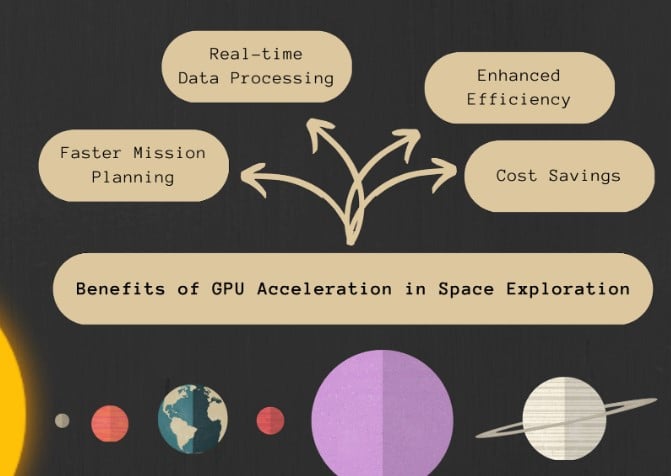
However, there are certain factors to keep in mind when using GPUs in outer space. Space is filled with high radiation levels, which can damage electronic components, including GPUs. It’s important to use radiation-hardened or radiation-tolerant GPUs. Also, GPUs generate a lot of heat. Efficient thermal management systems are essential to prevent overheating and ensure stable operation. Further, GPUs are known for their high power consumption. Optimising GPUs for energy efficiency is vital to minimise the impact on the spacecraft’s overall power budget. When factors like these are considered, GPUs in space can be used more productively, and we can learn more about space and plan missions quicker. GPUs are opening doors to discoveries in space that we didn’t even know were there!
What We Can Offer as TechnoLynx
We at TechnoLynx believe in helping businesses thrive through innovation and tailored solutions. As a dedicated software research and development consulting company, we understand that one size does not fit all in today’s tech landscape. That’s why we specialise in assisting high-tech startups and SMEs in advancing their technology and intellectual property. Our comprehensive range of services spans the entire research and development (R&D) journey, from initial prototyping to development, optimisation, and seamless integration.
Our expertise includes computer vision, generative AI, IoT edge computing, and high-performance computing. We pride ourselves on not just keeping up with trends but setting them. If you are eager to explore innovative software research and custom solutions, connect with us at TechnoLynx.
Conclusion
Humanity is curious about the universe we live in, which fuels advancements in space exploration. Recently, AI has taken off concerning aerospace’s outer space sector. Various AI innovations are reshaping space exploration by tackling critical challenges and enhancing mission efficiency. Some examples include computer vision in rovers, generative AI enabling conversational spacecraft interaction, IoT and edge computing streamlining data processing, and GPU acceleration accelerating research.
With research and development efforts being made to improve space exploration using AI, the possibilities are endless. If you are looking for customised AI solutions to solve your business needs, feel free to reach us at TechnoLynx.
Sources for the images:
- Devlin, H. (2023, June 24). ‘It’s not like science fiction any more’: Nasa aiming to make spaceships talk. The Guardian.
- NASA’s Jet Propulsion Laboratory. (n.d.). Mars Exploration Rovers Overview.
- Matthies, L. (2007). Computer Vision on Mars. Carnegie Mellon University, The Robotics Institute.
- Times of India. (2023, September 12). Bengaluru firm becomes first Indian Co to demonstrate edge computing in Space.

